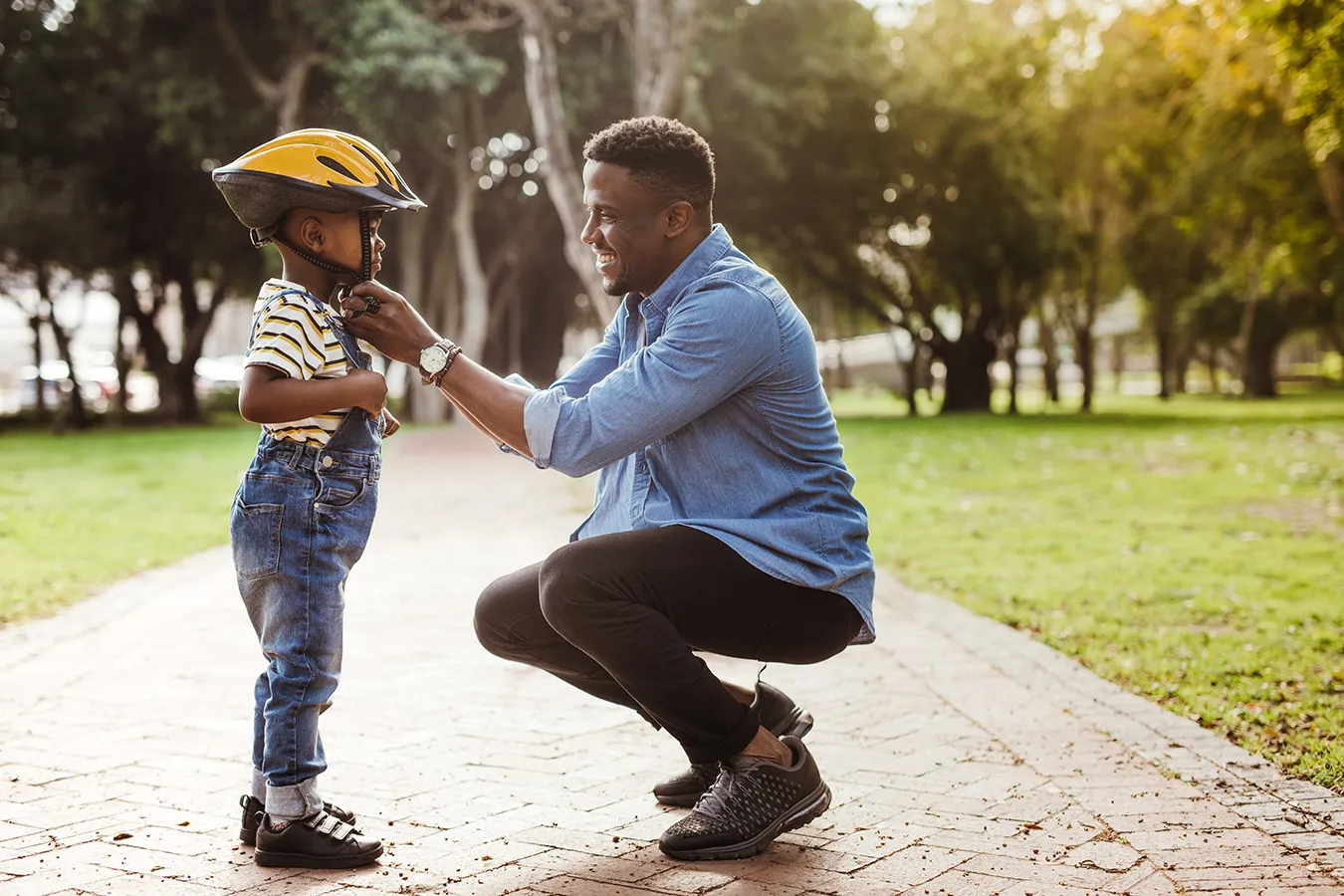Keep Your Head: Ride Your Bike Safely

Learning how to ride a bicycle can be a child’s fondest memory.
The world became a whole lot bigger when I could zoom around on my own wheels. Knowing that I was a safe bike rider allowed my mom some peace of mind when I cruised around our neighborhood by myself. August is back-to-school season, and some children may want to ride their bikes to school or learn how to ride a bike for the first time.
Bikes are an eco-friendly and convenient way to get around and can be a great source of exercise, but bicycle riders of all ages can get hurt. Your child needs to develop bike safety habits early to prevent falls or crashes that can lead to injury or death.
More than 100 children die from bike accidents a year.
Do not rely on luck to protect your child. Riding a bike is fun and teaching your child how to ride one is a precious experience, but you can avoid scary injuries by following proper bike safety habits.
A bicycle helmet is an absolute must for riders of all ages, no matter how short the trip or how close to home your child is riding.
Here are some helmet tips:
- To help children establish the habit of wearing a helmet, parents can serve as role models while riding with their children and always wear a helmet too.
- Both hard-shell and soft-shell bicycle helmets can fully protect your child, but other types of helmets, like football helmets, are not designed to protect your child from injuries specific to biking accidents. Look for a label inside the helmet that says it is approved by the Consumer Product Safety Commission (CPSC).
- A child’s helmet must be the right size and should properly fit their head. If their helmet can move around on their head, the helmet is not a good fit. Adjust the helmet’s chin strap to fit your child snugly. The helmet should be flat on the head and covering the forehead, not tilted backward.
- Although children may think of bike helmets as unfashionable or uncomfortable, they are essential to protecting the child from brain injuries. To help kids see the fun of having a helmet, help them choose a helmet in their favorite color or decorate their helmets with stickers.
According to the American Academy of Pediatrics, children are ready to ride a two-wheel bike at approximately age 5.
Find the right fit.
A bike is the right fit for a child if they can place their feet on the ground while sitting on the seat with their hands on the handlebar.
Do not let your child ride a bike that is too big for them. Oversized bikes are dangerous because they are difficult to control. Make sure your child tries out a new bike before you buy it.
If your child is old enough and skilled enough to ride on the street (generally at least 10 years old, according to the National Highway Traffic Safety Administration), your child should be riding with the flow of traffic, not against it.
Bikers who ride against traffic can surprise or confuse drivers, resulting in collisions. Many accidents happen when bikers do not obey traffic signs or signals.
Hand signals are essential for proper road safety. A child who cannot use hand signals without losing control of their bike should not be riding on the street. Children should never ride their bikes at dusk or at night.
For more information about bike safety for kids, visit HealthyChildren.org or contact the Injury Free Coalition for Kids, a Program of the Children’s Trust, at 305-243-9080 or online.
Written by Sherry Luo, M.D. candidate
with Julie Belkowitz, M.D., M.P.H., Lyse Deus, and Oneith Cadiz, M.D.
Tags: back to school, bicycle, biking, Dr. Julie Belkowitz, Dr. Oneith Cadiz, kids on bikes
